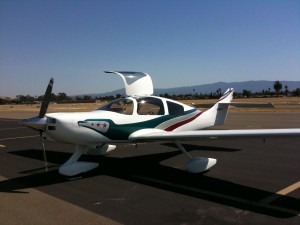INTRINSIC MOTIVATION, OSHKOSH, AND AVIATION INNOVATION
/At AirVenture 2009, held in Oshkosh, Wisconsin, innovation is in the air... and on the ground so you can take a look inside. This is the largest air show in the United States and will have a gate attendance of over 700K people this week - most of them enthusiasts and many of them active participants in the industry. I'll be at AirVenture for the next couple of days interviewing corporate, entrepreneurial, and amateur members of the aviation innovation community. I expect all the people I have a chance to talk with will be enthusiasts.
Enthusiasts are those people who participate, often intensely, for the love and interest of the topic. You can find enthusiasts for almost any field (e.g., Patricia Breen Christmas Ornaments), but my focus is on cases where innovation is likely to coexist with the deep interest. Last week I visited a model train convention. Yes, you can control your train wirelessly with your iPhone, this week Oshkosh.
Intrinsic motivation is critical to creativity and innovation (see Hennessey & Amabile, 1998). Creative work is hard work needing intense focus on the task and motivation to find a solution. Intrinsic motivation keeps the focus on the task without the distractions of wondering how you'll be paid, if the work is appreciated and the like. Yes, people can be paid and still be creative, if the monetary inducements don't take away from the mental focus required for creativity. Marissa Mayer (Google) touches on this point where she says "Give Ideas Credit, Not Credit for Ideas."

I am expecting the enthusiasm for aviation innovation to be palpable on the grounds of AirVenture 2009. I've already heard other passengers on this MD80 headed to Chicago gleefully announce that they're going to "Oshkosh." (yes, I've been doing the same thing all week.) It's this enthusiasm that makes it possible for someone to put in 4000 hours building a show-quality Wheeler Express (pictured here), or even the 2000 hours for more common "kit" planes. Hidden inside those thousands of hours are possibly an equal number of hours thinking about how to do it better than before, in terms of both process and design.
Sometimes we see this level of enthusiasm in formal work organizations. The key is to create organizational policies that do not detract from the task at hand -- innovation -- and to find and support intrinsic motivation for the task. Enthusiasts have self-selected into their roles. How can we build settings and teams to expand the opportunities more broadly? How can we find/create projects where our own enthusiasm runs high?
Additional Resources:
- Amabile: (pdf) Motivating Creativity in Organizations: On doing What You Love, and Loving What You Do.
- Garud, Nayyar, & Shapira: Technological Innovation
- Sutton: Weird Ideas That Work
- Hargadon: How Breakthroughs Happen






